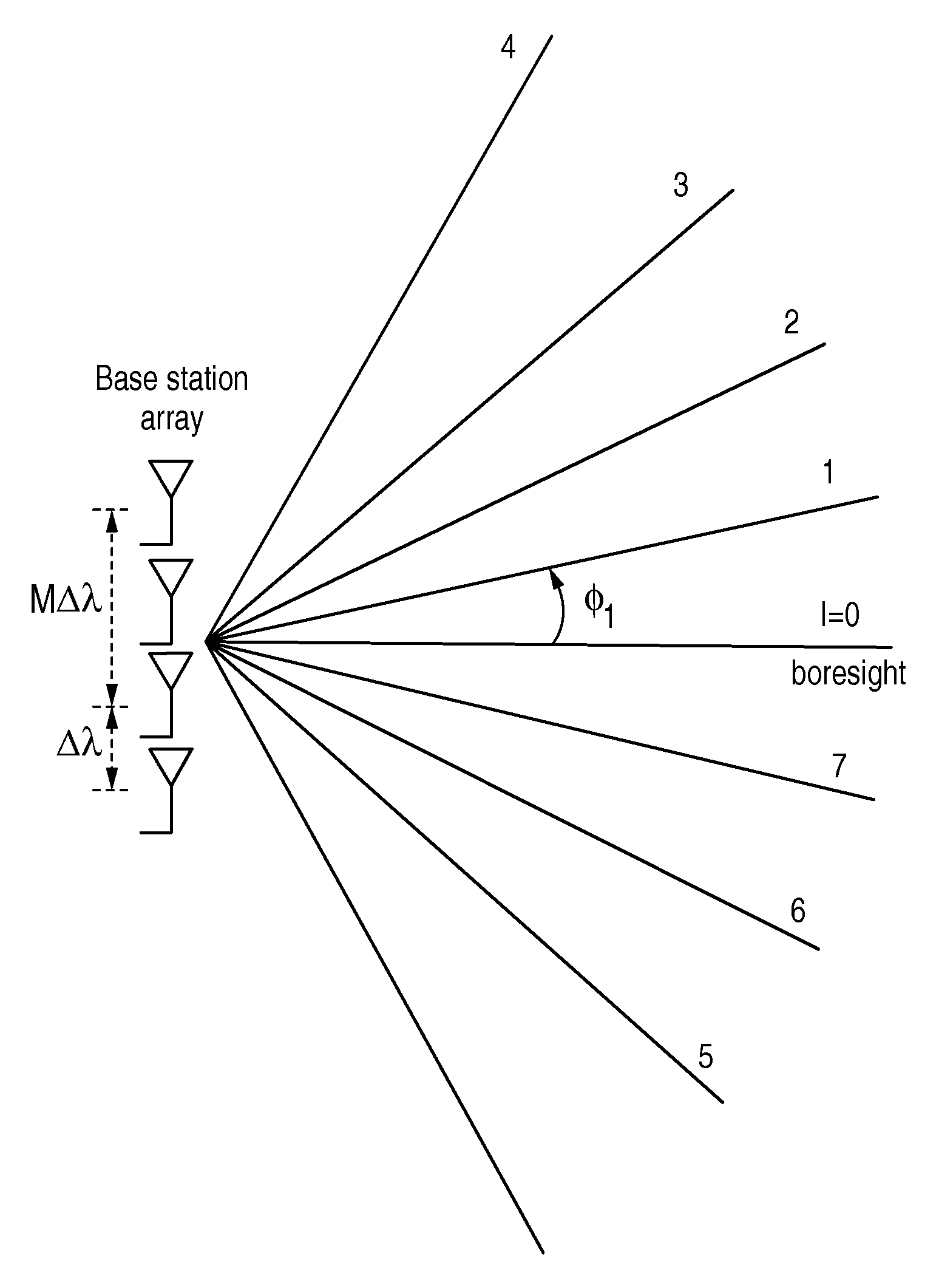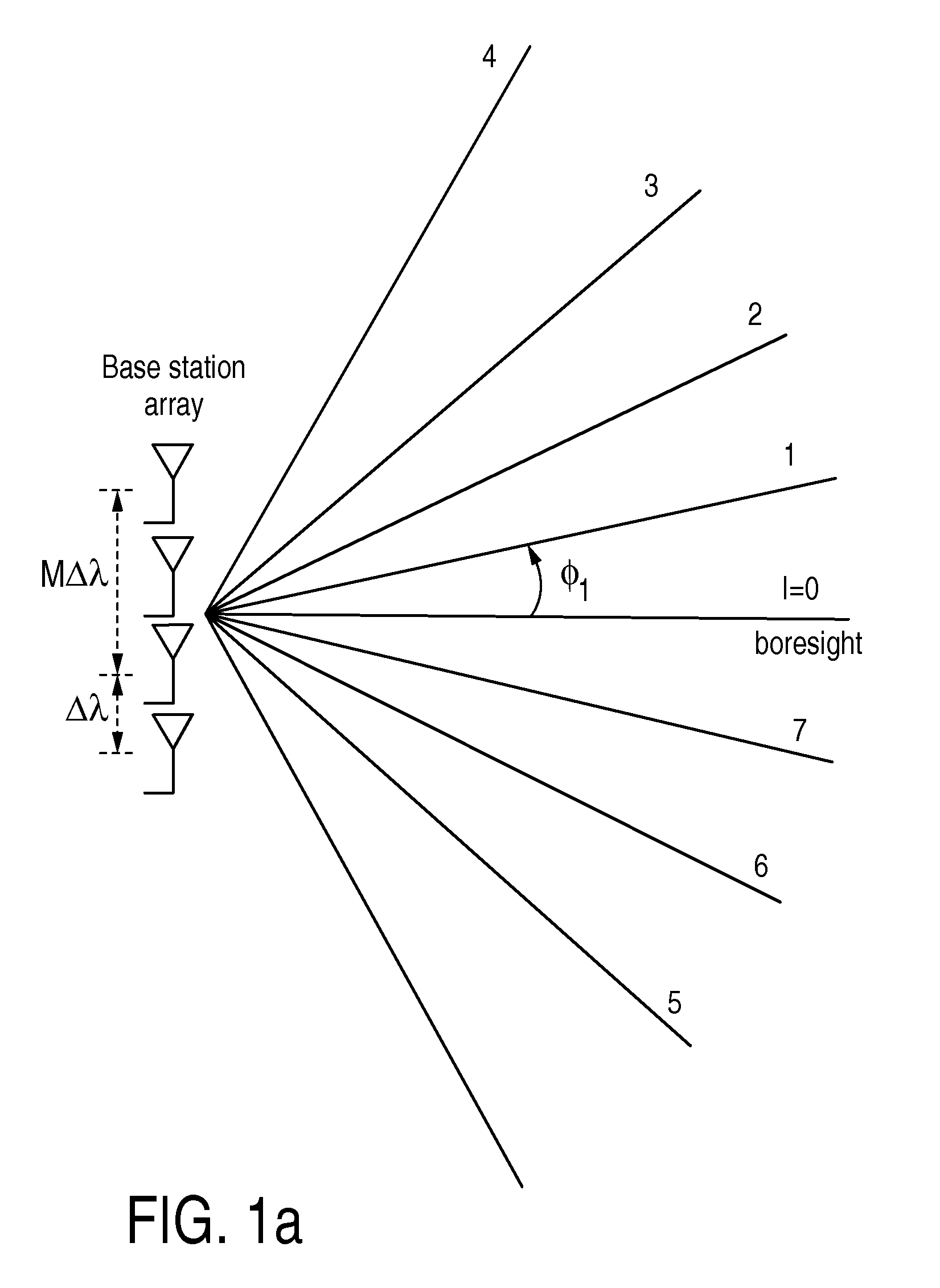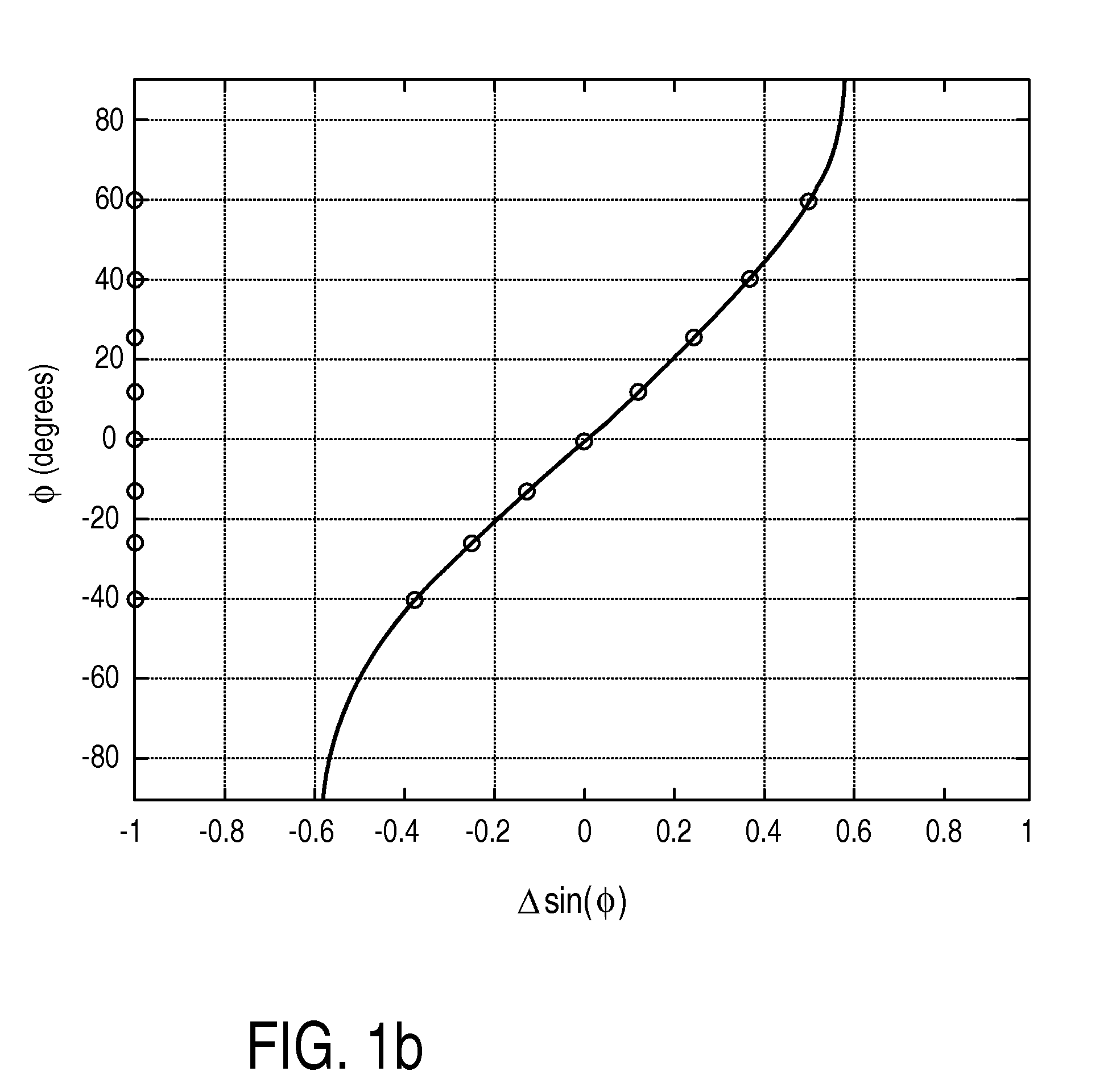Transform-domain feedback signaling for MIMO communication
a technology of transform domain and feedback signal, applied in the direction of transmission monitoring, diversity/multi-antenna system, digital transmission, etc., can solve the problem that the beamforming vectors are not jointly optimized according to the channel, and achieve the effect of reducing receiver complexity, reducing performance, and increasing flexibility
- Summary
- Abstract
- Description
- Claims
- Application Information
AI Technical Summary
Benefits of technology
Problems solved by technology
Method used
Image
Examples
Embodiment Construction
[0180]As an exemplary communication system we consider a cellular downlink transmission towards K receivers, with a single receiving antenna each. The signal at a generic receiver can expressed as
yk=hk∑i=1Kwixi+nk
where hk is the M-dimensional row-vector with the time-sample channel coefficients ‘seen’ by user k, wi are the beamforming vectors which multiplex the data symbols xi to the M transmit antennas and nk is the additive noise component. In the following we drop the subscript k denoting a generic user.
[0181]Let us indicate with ĥ the M-dimensional vector of channel measurements that the receiver, which hereinafter will also be referred to as the terminal, has derived for a given receiving antenna, by sensing the common pilots embedded in the resource block. M is the number of transmit antennas at the transmitter, which hereinafter will also be referred to as the base station or, in short, BS. We assume that n bits of the uplink signaling channel are reserved for reporting the ...
PUM
 Login to View More
Login to View More Abstract
Description
Claims
Application Information
 Login to View More
Login to View More - R&D
- Intellectual Property
- Life Sciences
- Materials
- Tech Scout
- Unparalleled Data Quality
- Higher Quality Content
- 60% Fewer Hallucinations
Browse by: Latest US Patents, China's latest patents, Technical Efficacy Thesaurus, Application Domain, Technology Topic, Popular Technical Reports.
© 2025 PatSnap. All rights reserved.Legal|Privacy policy|Modern Slavery Act Transparency Statement|Sitemap|About US| Contact US: help@patsnap.com



